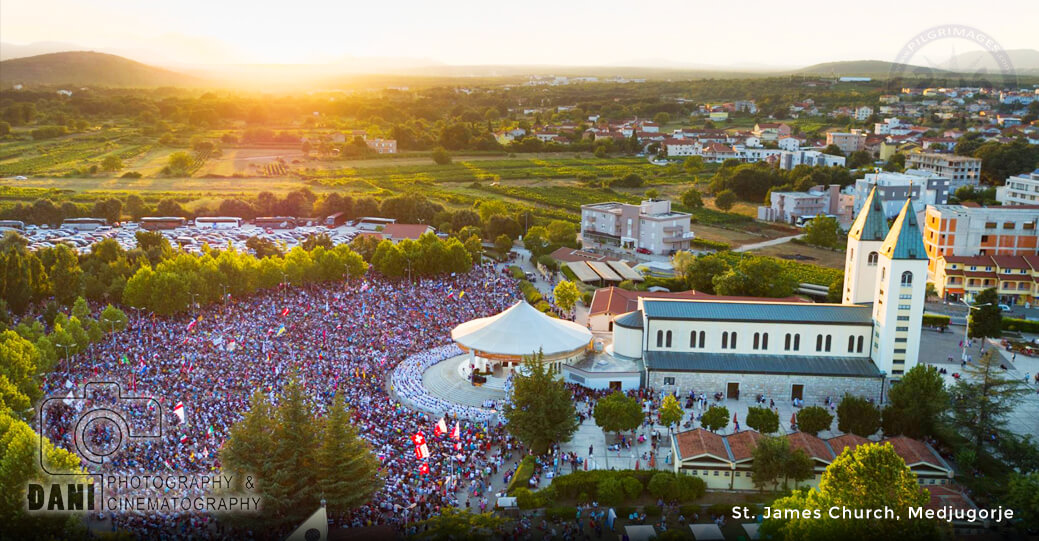When, a couple months back, the Vatican approved devotion for Our Lady of Medjugorje (which skeptics now have strived to spin as a negative decision), there were any number of intriguing remarks, in the official document, on Catholic spirituality in general.
“Many messages,” the decision pointed out, “invite the faithful to recognize the importance of seeking the help of the Holy Spirit.”
That they do.
The Vatican then quoted the Blessed Mother as saying:
“People are wrong when they turn solely to the saints to ask for something. The important thing is to pray to the Holy Spirit to descend upon you. When you have him, you have everything” (October 21, 1983).
Conversion is a focal point of the messages from Medjugorje, the Dicastery for the Doctrine of the Faith asseverated.
There is “an insistent exhortation, not to underestimate the gravity of evil and sin, and to take very seriously God’s call to fight against evil and the influence of Satan,” cited as the wellspring of hatred, violence, and division.
When it comes to prophecy, the dicastery honed in on messages from Our Lady such as:
“Those who make catastrophic predictions are false prophets. They say, ‘In such a year, on such a day, there will be a catastrophe.’ I have always said that chastisement will come if the world does not convert. Therefore, I call everyone to conversion. Everything depends on your conversion” (December 15, 1983).
“You err when you look to the future, thinking only of wars, punishments, and evil. If you always think of evil, you are already putting yourself on the road to meet it. For the Christian, there is only one attitude toward the future: the hope of salvation. Your task is to accept God’s peace, to live it, and to spread it” (June 10, 1982).
“Today’s world lives amid high tensions and walks on the brink of a catastrophe. It can only be saved if it finds peace. But it can only have peace by returning to God” (February 15, 1983).
Such messages are important; they matter. Yet one must at the same time consider the “secrets” given the visionaries, who have portrayed them as warnings of truly monumental coming “chastisements.”
No escaping those warnings from the earliest days: Seers not only turn serious but even have cried when relating the receptions of them.
“I have come to call the world to conversion for the last time,” Mary has said. “Later, I will no longer appear on earth. These are my final appearances” (May 2, 1982).
“Make haste to convert. When the promised sign is manifested on the hill, it will already be too late” (September 2, 1982).
That’s called “sobering.”
Importantly, there is the message, at Medjugorje, which now has more Church sinew behind it than ever, of ecumenism.
“On earth, you are divided, but you are all my children,” Our Blessed Mother said. “Muslims, Orthodox, Catholics, all of you are equal before my Son and me. You are all my children. This does not mean that all religions are equal before God, but people are. It is not enough, however, to belong to the Catholic Church to be saved: one must respect God’s will […]. To whom little has been given, little will be asked” (May 20, 1982). You are not true Christians if you do not respect your brothers and sisters who belong to other religions” (February 21, 1983).
Yet there is also a reminder of the need to “preserve the Catholic faith at all costs, for you and for your children” (February 19, 1984).
“I am closer to you during the Mass than during an apparition,” the Virgin of Medjugorje, as quoted by the Vatican, said.
Many pilgrims would like to be present in the small room of the apparitions, and so they crowd around the rectory. When they swarm in front of the tabernacle, as they now do in front of the rectory, then they will have understood everything; they will have understood the presence of Jesus, because receiving Holy Communion is greater than being a visionary” (November 12, 1986).
“Find peace in nature and you will discover God the Creator, to whom you can give thanks for all creatures” (July 25, 2001).
Thus we see the key issue here: balance. The messages from Medjugorje are balanced, in a way that evades many modern theologians.
“Do not let the light of the world seduce you,” Mary has said. “Open yourselves to the light of Divine Love, to the Love of my Son. Decide for him; He is Love and He is Truth” (May 2, 2016).
A constant call to abandon a worldly lifestyle—excessive attachment–to worldly goods is also a theme.
“Dear children, you know that I promised you an oasis of peace. But know that next to the oasis, there is the desert where Satan is lurking and trying to tempt each of you.” (August 7, 1986).
“Wherever I go and where my Son is also with me, there Satan also joins.” (January 28, 1987).
[resources:books on Medjugorje and pilgrimage with M. Brown]


